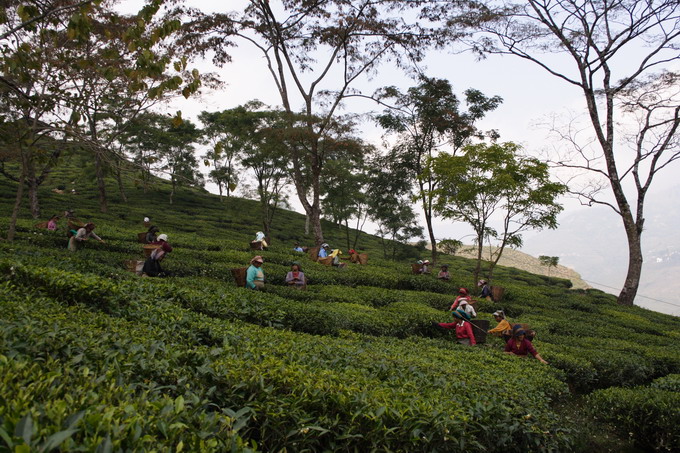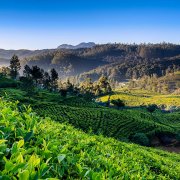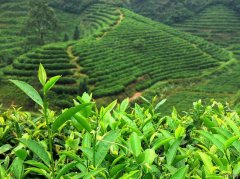Darjeeling black tea taste difference between spring picking tea and summer picking tea how to drink spring picking and summer picking Darjeeling black tea
The name of Darjeeling Tea for Darjeeling comes from the Himalayan region of India, where the plant is grown. Unlike its eastern neighbour Assam, Darjeeling has a smaller area, higher elevations and lower temperatures, so the tea is lighter and more nutty. Because of its exquisite taste and superior quality, Darjeeling Tea is often called "champagne in tea!" Like all other types of tea, Darjeeling Tea is made from the leaves of tea trees. However, most Indian tea is produced by a variety called camellia, while Darjeeling Tea is produced by a Chinese variety called camellia. This special breed was brought to India from China by the British in the 19th century. Because of its special variety and unique location, Darjeeling Tea has many different characteristics, growing native plants at lower elevations than traditional Indian black tea. Because of its unique quality, aroma and flavor, the best Darjeeling Tea is extremely expensive and in short supply. Small leaves grow slowly and need to be picked manually. Like other well-known local commodities such as champagne or Parmesan, only tea grown in Darjeeling, India, is technically allowed to be sold as Darjeeling Tea. The Indian Commission has placed a certification mark and logo on Darjeeling boxes so that consumers know that the products they buy are authentic. The taste of Darjeeling Tea during Darjeeling tea season varies depending on the weather, the garden or estate planted, and the harvest season of the year. Darjeeling has three main tea seasons when picking fresh leaves. The spring rain begins in early March and lasts until the beginning of May. Spring Darjeeling Tea is a classic spring-picked tea with a faint floral fragrance and astringent taste. The second rainfall began in May and lasted until the monsoon rains arrived in June. Darjeeling Tea is the most common variety in Darjeeling, and it is also familiar to most people when talking about Darjeeling Tea. The taste of Darjeeling Tea in the second tea season is usually slightly deeper and more intense, which is the characteristic of summer picking Darjeeling. In October, when Rain Water stops, the third or autumn flowering season lasts until the plant enters hibernation in winter. Although all kinds of tea have similar general characteristics, the tea made from each brewed tea is very different. Darjeeling Tea is graded according to size and quality. SFTGFOP (Superfine Golden Flower Orange and White Milky Tea) is Darjeeling Tea's highest grade, while tea "powder", including the fine powder often found in commercial tea bags, is the lowest. Darjeeling Tea caffeine content Darjeeling coffee contains the right amount of caffeine, each cup of coffee contains less than half the caffeine of coffee. Darjeeling's caffeine content is affected by several factors, including: tea varieties-although all teas are made from the same tea tree, there are two main varieties. Darjeeling black tea is a variety of camellia (camellia sinensis var. Sinensis), while most other Indian black teas are produced by the camellia variety assamica, which is native to India. Camellia tends to have a low caffeine content. Leaf size-our Darjeeling is a full-leaf tea of excellent quality. Whole-leaf tea tends to have a slightly lower caffeine content than broken-leaf tea or fan-shaped tea. Water temperature-like other black teas, Darjeeling black tea is brewed in boiling water (about 212 degrees Fahrenheit). The hotter the water, the more caffeine in the tea. Bathing time-we recommend two to three minutes a day in Darjeeling. The shorter the brewing time, the lower the caffeine content in the brewed tea.

Darjeeling Tea's benefits are the same as other types of black tea. Darjeeling Tea has many health benefits. These include: high levels of antioxidants-Darjeeling black tea is high in antioxidants that help reduce harmful free radicals in the body and prevent cancer and other degenerative diseases. Replenish energy-Darjeeling contains the right amount of caffeine, which can provide you with the energy you need for the day. Improve attention-in addition to caffeine, black tea also contains L-theanine, a compound that helps reduce stress and clear your head. Caffeine and theanine can increase your attention and brainpower. Good for the heart-black tea contains flavonoids, which can reduce heart stress and help prevent heart attacks and strokes. Help digestion-A cup of black tea can help you digest rich food and relieve stomach problems. Anti-inflammatory-black tea also has anti-inflammatory properties, which can help reduce inflammation and relieve the symptoms of diseases such as arthritis. Prevent colds-worry about getting sick? Black tea has antiviral and antibacterial properties that can help strengthen your immune system and protect you against the common cold and other diseases. Relieve headaches-a cup of Darjeeling coffee can help relieve mild headaches because of its moderate caffeine content. Guidelines for brewing Darjeeling Black Tea We recommend using a teapot, brewer or filter to prepare Darjeeling Tea. These brewing methods make the tea leaves have enough room to expand in the process of soaking, thus making the cup richer and more delicious. Add one teaspoon of tea to every six ounces of water in your pot or cup. Heat the water to boil, then add the tea for 2-3 minutes. Don't make tea too much, because Darjeeling Tea may become bitter if you cook it too long.
Important Notice :
前街咖啡 FrontStreet Coffee has moved to new addredd:
FrontStreet Coffee Address: 315,Donghua East Road,GuangZhou
Tel:020 38364473
- Prev

Ceylon black tea bought back why is broken Ceylon black tea powder how long to soak without bitterness?
Ceylon is a rich black tea produced in Sri Lanka and was called Ceylon during the British colonial rule. The characteristics of this tea are similar to those of other black teas in India, such as Assam and Nilgiri. It shows bright red and moderate astringency, and makes a light cup of tea with hints of citrus and spices.
- Next

What are the benefits of Nepalese black tea? Which brand of Nepalese tea tastes good?
Although countries such as India and China have traditionally grown and cultivated black tea, Nepal, which is relatively small, is famous for producing high-quality tea. From the middle of the 19th century, the British Empire expanded to India, and the British East India Company began to fully carry out commercial tea production in the region. Although the Nepalese tea
Related
- A complete list of coffee bean names and their meanings! What is Yejia Shefi coffee? Where is Mantelin coffee?
- What grade does Arida Manor Kaduai coffee beans belong to? What treatment is Arida ASD slow anaerobic sun exposure?
- The milk tea cup becomes smaller?! Overlord Tea Girl launches a new "Return to Yunnan" series
- Accused of selling counterfeit and high-priced coffee beans! Well-known boutique coffee brand "Oukelao" bowed and apologized!
- How to make espresso dumplings? Can I eat coffee and glutinous rice balls together?
- Save the unformed and stagnant powder cakes in one second! What is the problem with stagnant water in the powder bowl of the espresso machine?
- What does hand-brewed coffee stop mean? Why is it not recommended to make coffee by hand?
- Is it normal to smell like coffee? Why does coffee smell like alcohol? What's wrong with the strong smell of cold extract ice dripping ice brewed coffee?
- How to solve the problem that hand-brewed coffee extraction takes too long? Why is the water flowing so slowly when making coffee?
- The main points of making Australian white coffee, the proportion details, how does Australian white properly foam and blend the flowers?

